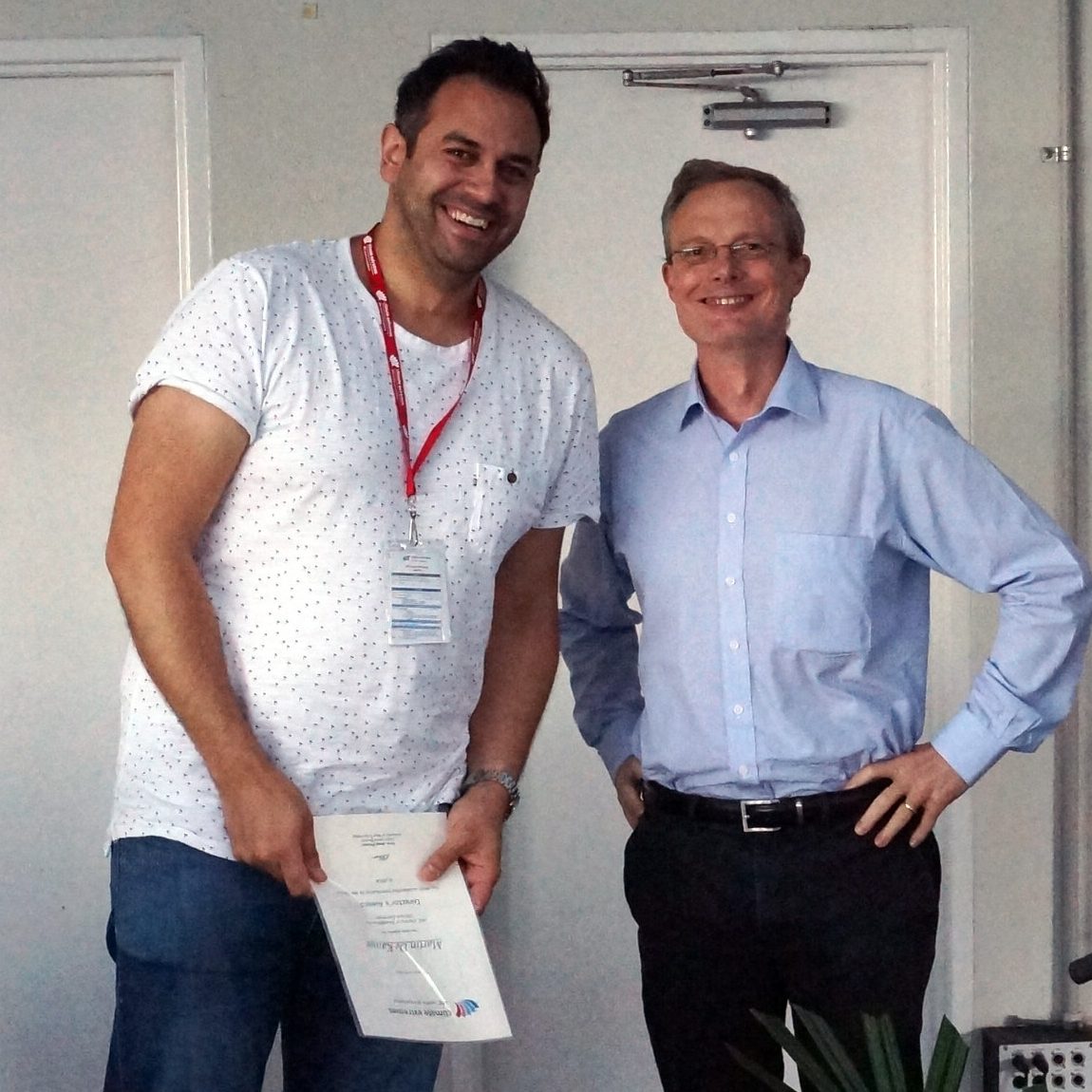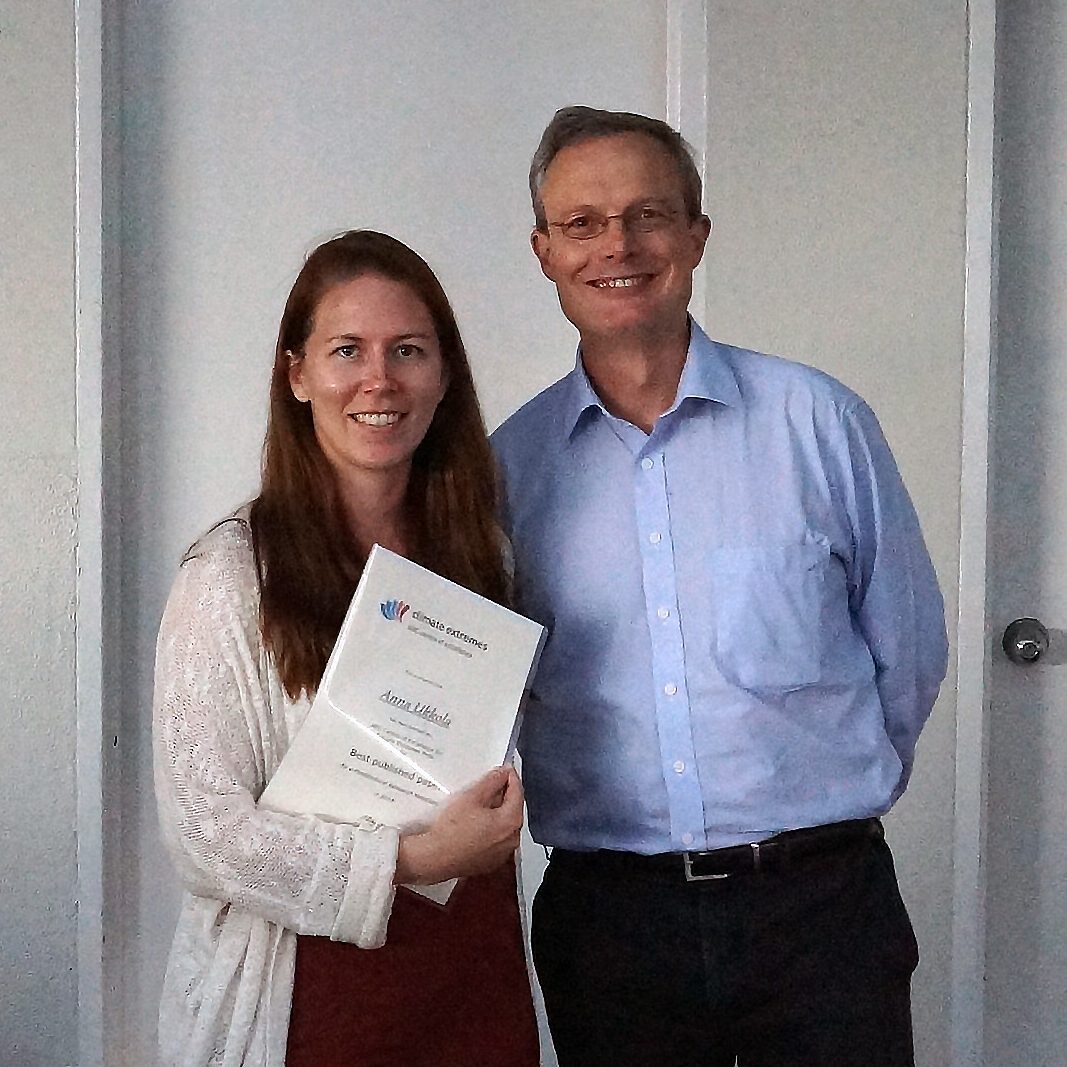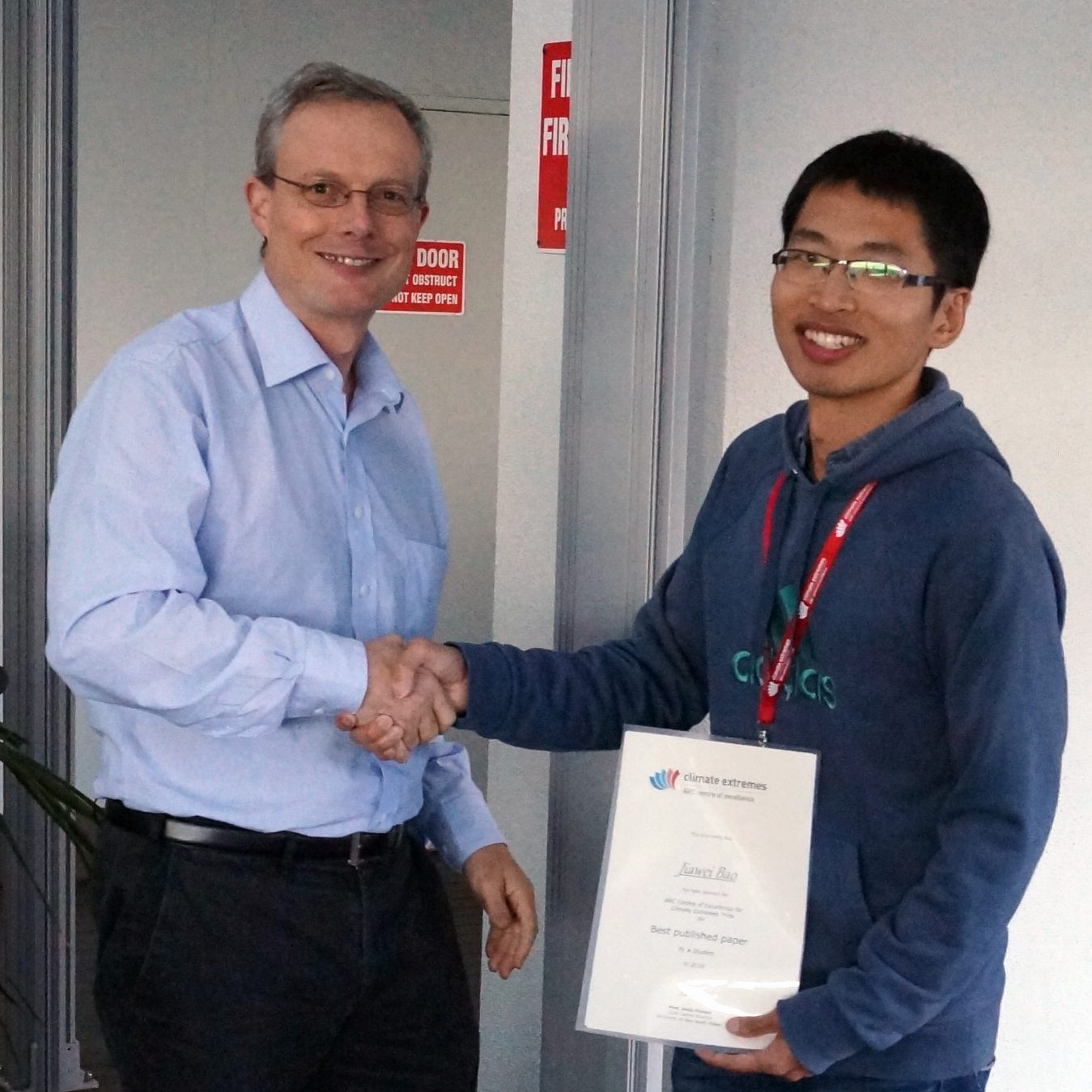This year ends on a high note with the announcement of a remarkable number of individual successes as we enter awards season, an impressive range of fundamental research that sets future directions for the Centre, a new citizen science weather app, and the hiring of a Knowledge Broker. We also hosted our annual workshop in Wollongong, which involved over 150 researchers and students.
Bringing our partners and stakeholders together
The past four months has seen us engage strongly with the Centre’s partners, our stakeholders and international research networks. The Extremes Rainfall research program brought together 30 key researchers from the Bureau of Meteorology, CSIRO, NSW Office of Environment & Heritage, the National Centre for Atmospheric Research and our partner universities. You can find a report on that workshop here.
Meanwhile, Martin De Kauwe of the Drought Research Program led an international workshop held at Biospehere 2 in Arizona to describe the CO2 fertilisation effect on the global carbon sink.
The Climate Variability and Teleconnections Research Program has worked on refining our modelling systems but also provided an opportunity for students and research fellows to experience the challenges of measurements on a voyage close to the Antarctic Circumpolar Current aboard CSIRO’s RV Investigator. This work will underpin the research of Australian and international investigations into the Southern Ocean and its impact on global climate.
While all this work continues, we have hired a Knowledge Broker, Ian Macadam, to develop out outreach program and deepen the Centre’s relationships with our key stakeholders. He will also be involved in creating briefing notes. His first, on the IPCC Special Report on Global Warming of 1.5C, can be found here.
In the context of knowledge brokering, a very useful outreach and research initiative is the WeatheX mobile app. The development of this app, which was co-ordinated Joshua Soderholm and Christian Jakob, will lead to citizen scientists being able to take observations that will help researchers fill in the gaps around storms and extreme rainfall that currently exist. You can see how some of the reports made using the WeatheX app as a hail storm passed over Melbourne on November 7, add to the Bureau’s radar data. It is the first of a number of citizen science and outreach activities we expect to produce over the coming year.
Testing climate models
Each of the Centre programs has produced a range of significant results but their work on improving climate models has been particularly noteworthy. With climate models the foundation of much of extremes work, improvement here is fundamental to our future research and to that of the broader climate community.
Work on cloud physics in climate models by the Extreme Rainfall team found small processes not well represented in these models caused significant variation in rainfall in the tropics. Work is now underway in how to better improve these processes. By contrast, other research from the team showed considerable consistency across climate models showing that rainfall would increase over land with global warming. This result was particularly robust outside of the tropics.
The Drought research group produced a noteworthy paper that evaluated CMIP5 climate models against flux tower data. The researchers found many of the models overestimated the interaction between hot and dry conditions, consequently amplifying heat extremes. Again, this research sets the foundations for further improvements in climate models.
Sea surface ice and sea ice volume around Antarctica have long posed a problem for climate models. The Climate Variability and Teleconnections RP compared 10 CMIP5 models with observations and found that one of the causes of the mismatch between models and observations may be an over emphasis on dynamic processes.
Our annual workshop
The annual workshop this year took on an entirely new approach with three key aims, to help early career researchers feel part of the team, to forge cross disciplinary research programs and to introduce all staff to the science underpinning the Centre of Excellence. You can read a full report on the workshop here.
It succeeded on all of these fronts and was also noteworthy for the examination of the current drought in Queensland and New South Wales. This drought is unusual as the usual climate contributors do not appear to have played a role in its development. Taking a cross-Centre approach, participants from all research programs proposed directions for investigation into the causes of the drought and why it has persisted. The two sessions devoted to the drought set the scene for a robust discussion on the third day that has helped direct future research into this issue.
Our workshop is also where we award a few of the people who have made an outstanding contribution to the Centre over the past year through their research and engagement. This year the awards went to:

Directors Prize: Martin de Kauwe

Best Paper by a Postdoc: Anna Ukkola

Best paper by a Student: Jawei Bao
And on the subject of awards, it is a delight to acknowledge some other recent winners.
The announcement of the annual Australian Meteorological and Oceanographic Society’s awards saw three CLEX researchers honoured for their contribution. The 2018 Morton Medal was awarded to Chief Investigator Christian Jakob. Dr Adele Morrison was awarded the 2018 Meyers Medal and Dr Andrew King won the inaugural AMOS Science Outreach Award.
Another very important award went to Associate Investigator Caroline Ummenhofer who in September was named as a winner of the AGU James B. Macelwane Medal. This prestigious medal is awarded to an early career researcher within 10 years of their PhD and includes becoming an AGU Fellow in their own right. Associate Investigator Prof Trevor McDougall was also named as a Fellow of the American Geophysical Union.
Of course, this introduction only touches the tip of the Centre’s achievements over the past four months. To find out more about our many recent achievements I encourage you to read the details provided later in this newsletter.
Finally, Christmas offers many of you the only chance for a decent break – between teaching, grant deadlines, administration and so on. I therefore wish each of you a peaceful and enjoyable holiday season and hope to see you again in the new year.
